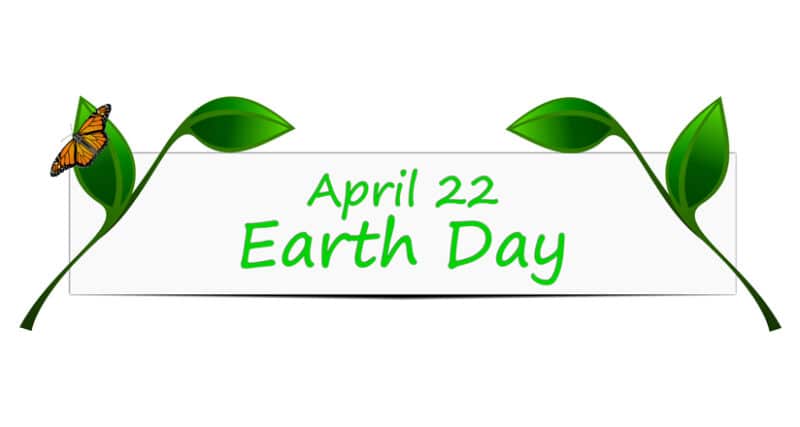Earth Day Activities for Your Virtual and In-Person Classroom
Although the Covid world limits us hugging each other, we can still encourage our students to get out and hug our world this Earth Day. April 22, 2021 will mark 51 years of Earth Days, and it comes with the limitations of the world’s current pandemic. Just as we stood in solidarity during the 2020 stay at home lockdown, April 22, 1970 is also a time that we saw American unify in protest against the many environmental abuses that were threatening our world at that time. Organized by Wisconsin’s U.S. Senator Nelson, the first Earth Day rallied in cities like New York, Chicago, and Washington DC. An environmental movement followed, resulting in landmark environmental laws finding success locally, across the country, and around the world. Major changes, including the Clean Air Act, Water Quality Improvement Act, Endangered Species Act, as well as the formation of the Environmental Protection Agency, ensued.
2020’s Earth Day was different from the 49 that had come before it. The world found itself locked within the safety of our homes, with schools, businesses, restaurants, and even parks closed. Last year’s Earth Day was celebrated within the walls of our homes and across the distance of our online classrooms. 2021 still finds us standing 6 feet apart, our faces covered in masks, with limited school hours, and business only partially open. Nevertheless, our world IS open. Our earth IS healing, and the resilient are pushing on to welcome each and every day. Many of our classroom doors are open, and thankfully, this year we can celebrate Earth Day together, even if not hand in hand. Maybe now, more than ever, the world cries out for change, for protection, and for healing. For the first time in generations, as a world, we were forced to be still. As our busy lives and schedules abruptly transformed, from the confines of our homes, we breathed in and out the fresh air. We watched the birds fly, and the squirrels chase. We noticed the sunrises, and noticed the stars as they appeared in the sky at dusk. Many of us really saw the world for the first time in a long time. We saw worldwide emissions fall as we drove less, and energy demands diminished as businesses stayed closed. Many of us planted flowers, gardens, and trees to our yards. In many ways, Earth Day has been in full swing for the past year, but let’s not stop here. Let´s challenge our students to continue some of the things that have helped improve the Earth this past year. Here are some ideas to fill your Earth Day lesson plans:.
Online activities/ideas:
- The National Aquarium provides kid sized environmental challenges through 48 Days of Blue, which can be used for Earth Day ideas and beyond. Check them out!
- FREE online learning games about Earthday (some are really cute) about greenhouse effects, oceans, recycling, and natural resources
- Watch the history of Earth Day using PBS´s movie Earth Days
- Find a virtual field trip- Discovery offers many of them here: https://www.discoveryeducation.com/community/virtual-field-trips/
Outside activities for the online and virtual classroom:
- Have kids do a garbage sweep of the schools or their home area and record what they find. Lead an online discussion of what they found, or complete math percentages of the garbage collection. For safety reasons, I would recommend parent permission and the use of gloves before you send them anywhere at all. A neighborhood garbage clean up: have the kids keep a record of the trash that was collected and post it online for comparison.
- Create a school garden, or ask students to plant their own garden and take a picture to share online with the class.
- Have students create a map of their schools, or their house and block- including the grass, treed areas, sidewalks, blacktop, and storm drains. After, lead an online discussion about what water can and cannot do in their neighborhoods.
- Keep it simple and ask students to just take a walk or hike and enjoy the beauty that is our Earth. Have them draw or paint a picture from their travels. This can be done in school, or as a homework assignment.
- Create a schoolyard or neighborhood nature scavenger hunt. You can focus this on flora and fauna and have them find different trees, plants, and flowers, or have them focus on environmental issues like garbage, evidence of animals (waste or prints), black op, drainage ditches, and storm sewers. Lead a discussion about what the students found online or in class.
- Ask students to write positive Earth Day messages on school sidewalks or their own sidewalks and driveways. If students do not have chalk at home, have them make paint by using 1 cup of water, 1 cup of cornstarch, with food coloring).
At home activities:
- Recycle – Ask students to find out how their family and town handles recycling. Challenge them to come up with a better system for their home or community collections.
- Repurpose things that would otherwise be thrown out or are no longer used in their home. What kind of inventions or alternate uses can they come up with?
- Clean up! Quarantines are leaving us a lot of time to clean up- but instead of throwing things out, can students donate or sell any of these items?
- Journal: Have students record their own (or family’s) daily use of water. Have them consider and discuss as a class if they think they are using too much? As a class, come up with some conservation ideas.
- Challenge students to have a weekend “no TV/video games/electronics day” Discuss how electricity gets to us- and possible energy sources used today.
Arts and crafts activities:
- Make a homemade bird feeder with recycled items such as milk cartons, toilet paper rolls or empty water bottles and helps creatures of the earth. Have students hang it in their yards and take a picture to share online.
- Ask students to make a nature collage. Send them on a nature walk to collect items like pinecones, leaves, sticks, rocks, flowers, etc. Have them make a collage on construction paper, take a picture, and share it with the class.





